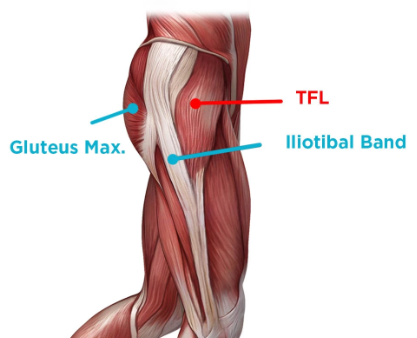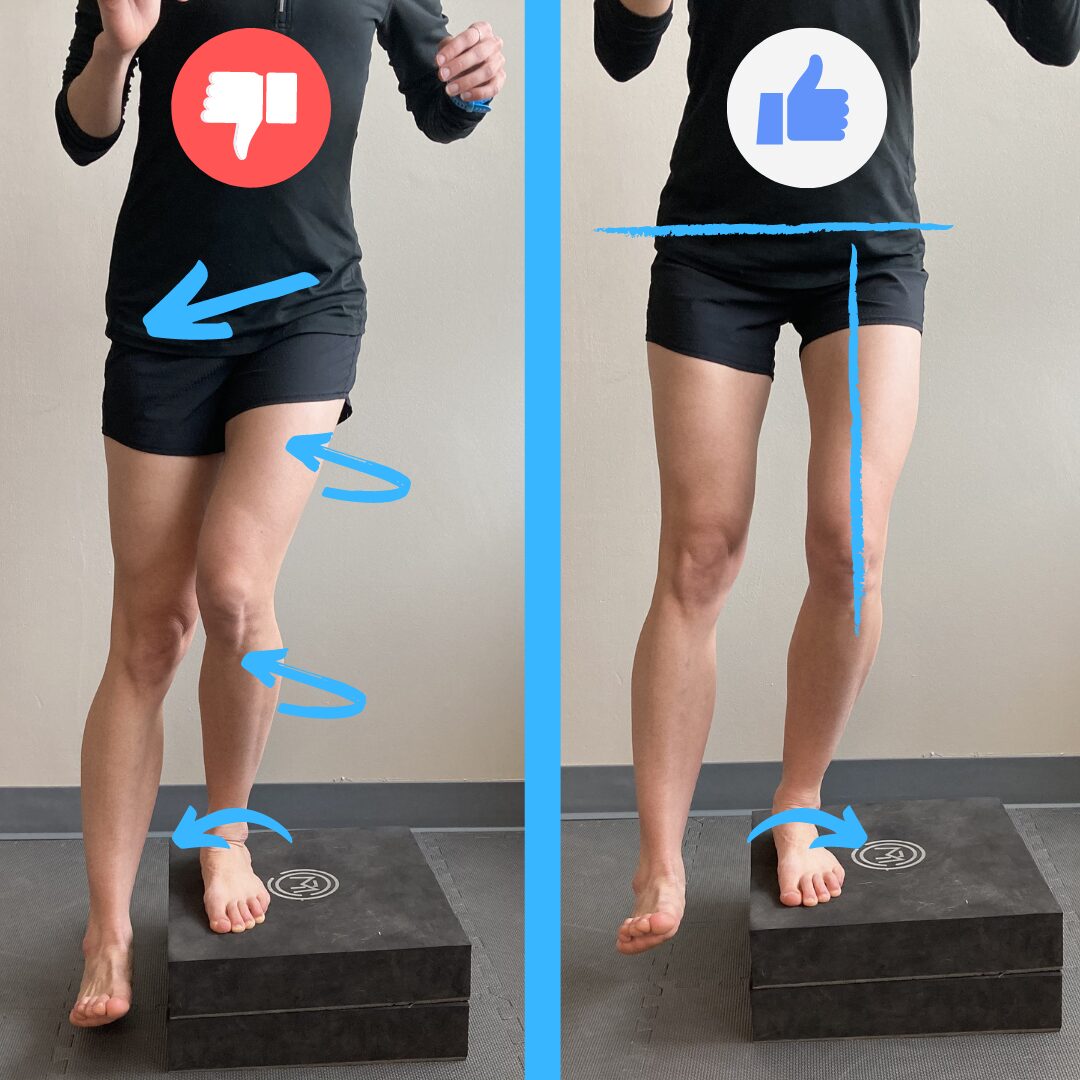Raise your hand if you’ve ever been told to strengthen your glutes!
It is very common for athletes and runners with lower extremity overuse injuries (ITB syndrome, shin splints, hip/groin pain) and/or low back pain and sacroiliac joint pain to demonstrate what we call a collapsing pattern. This can show up during squatting, jumping, and running and is often due to exaggerated hip adduction, flexion, and internal rotation.
The glute max and muscles of the hip are supposed to keep this in check by providing an equal and opposite external rotation and pelvic stabilization role. This is why we so often prescribe glute exercises.
However, you could be missing something big in your efforts to overcome this collapsing. The TFL (tensor fascia latae), is a muscle at the front of the hip that attaches into the ITB and plays a key role in hip mechanics. While the TFL also helps to stabilize the hip, some of the more anterior fibers of this muscle can become overactive and pull the hip into the collapsing pattern. It then becomes a fight between the glutes/external rotators and the TFL.

This is why we often treat the TFL with soft tissue release and then prescribe a self-mobilization/inhibition exercise to help tame the overactive TFL. Check out the video to see how you can easily release your TFL.
We suggest finding 1-2 spots on each side (the sore spots!) and holding each spot for about 30 seconds. No need to roll around for this one, just relax or melt that muscle into the ball. This can also be a great muscle to release as part of your warm-up routine. Try it out and see if it helps decrease the pain on your next run or during your next game!
BONUS: From this post, you may be picking up on the fact that the TFL and the glutes attach into the ITB (we’re going to do a quick tip about ITB syndrome very soon). Rather than rolling out your ITB, which can sometimes make things worse, try releasing your glutes and TFL. We bet you’ll see better results!

